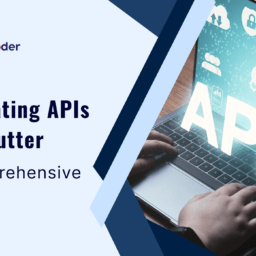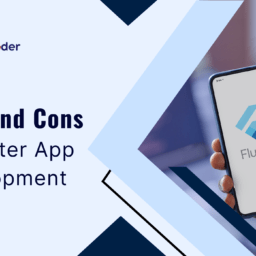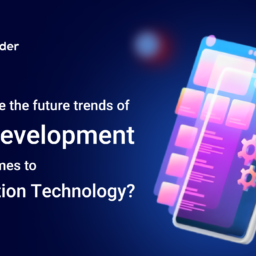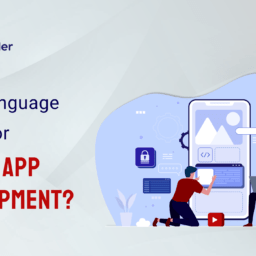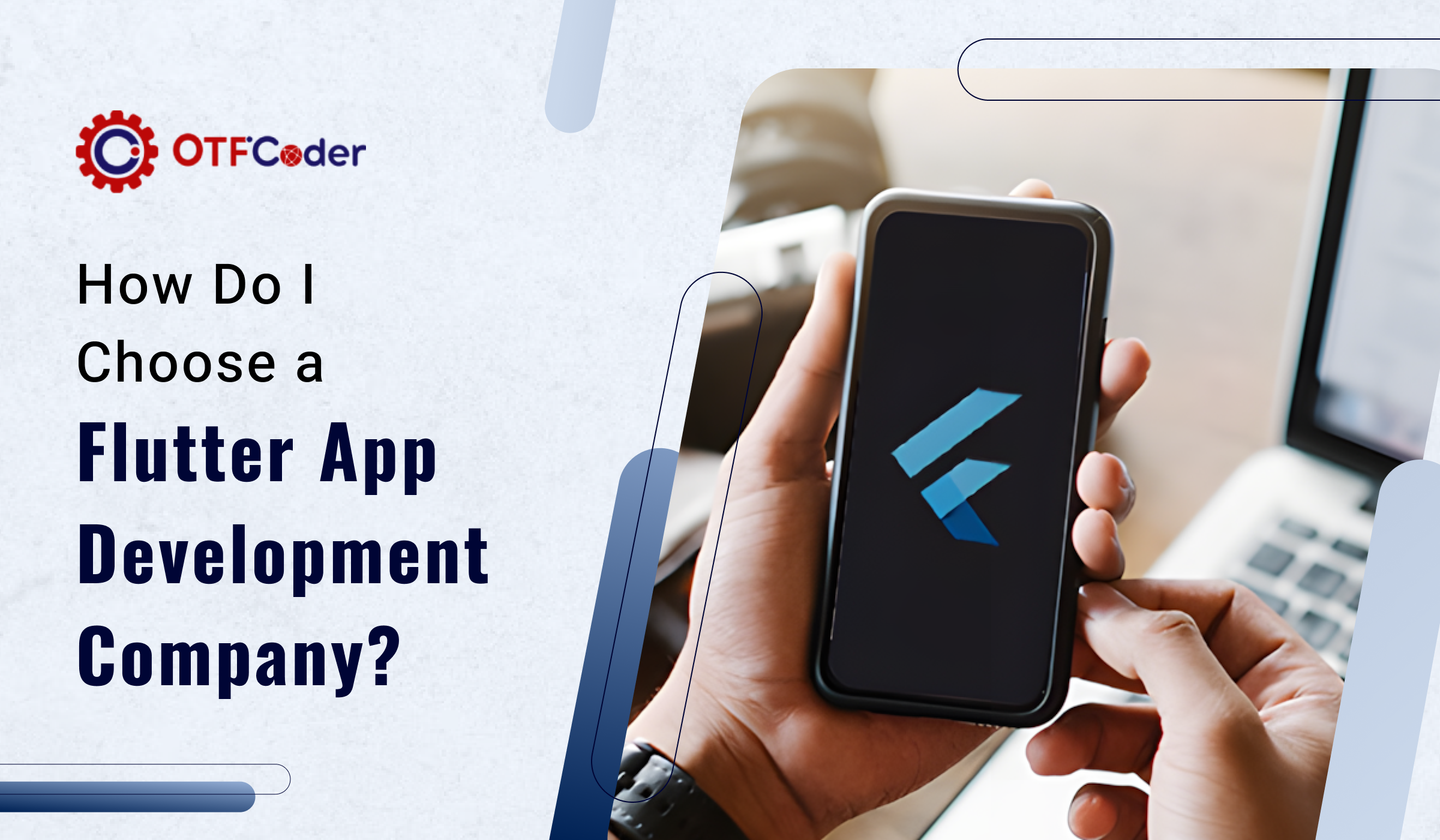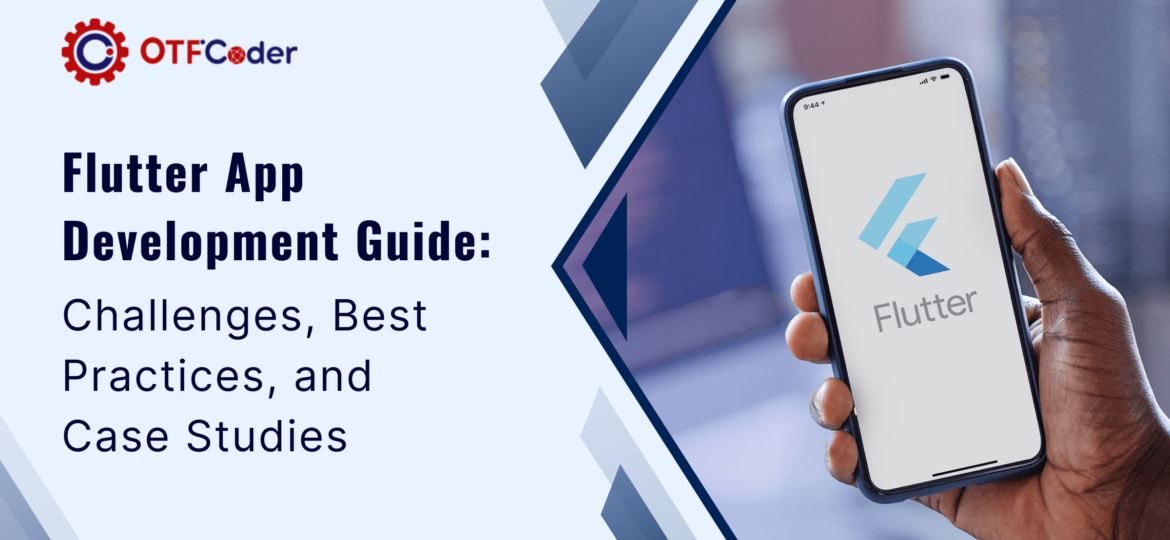
Flutter is a great tool for making mobile apps that work on both Android and iOS. With Flutter, you can write your app once and see it run on different devices. This saves time and makes it easier to create amazing apps. Flutter uses a special way of working with layers, which helps developers design beautiful screens and manage how users interact with the app. It’s built on Dart, a programming language that’s simple to learn, even for beginners. While learning Dart and using Flutter can be challenging at first, many resources are available to help you succeed. In this guide, we will look at common challenges, best practices, and inspiring examples of apps made with Flutter.
In this blog, we will explore the journey of Flutter app development in detail. We’ll discuss the common challenges developers face, best practices to ensure success, and highlight some inspiring case studies that showcase the power of Flutter. Whether you’re a beginner or an experienced developer looking to enhance your skills, this guide will provide valuable insights into creating stunning mobile applications with Flutter. So, let’s get started!
Why Choose Flutter?
Flutter is an exciting choice for app development. Here’s why you should consider it:
1. Cross-Platform
Flutter lets you write your code once and run it on both Android and iOS. This means you don’t need to create separate apps for each platform. You save time and effort, making it easier to reach more users. With Flutter, your app will look and feel the same on different devices, providing a consistent experience for everyone.
2. Fast Development
One of Flutter’s best features is “hot reload.” This allows developers to see changes in real-time while coding. If you make a mistake or want to try something new, you can fix it and see the results instantly. This speeds up the development process and helps you get your app to users faster.
3. Beautiful UI
Flutter offers a rich set of customizable widgets. These widgets help developers create attractive and responsive user interfaces easily. You can design your app to look exactly how you want, with smooth animations and eye-catching layouts. Flutter’s flexibility ensures that your app stands out in a crowded market.
4. Strong Community
The Flutter community is large and supportive. There are many resources available, like tutorials, forums, and documentation. If you run into problems or have questions, you can find help quickly. This makes learning and using Flutter easier, especially for beginners.
Challenges in Flutter App Development
While Flutter is a powerful tool for app development, it does come with some challenges. Here’s a closer look at three key challenges you might face:
1. Learning Curve
If you’re new to programming or the Dart language, there will be a learning curve. Dart is different from many other languages, so it may take time to get used to its syntax and features. You might feel overwhelmed at first, but don’t worry! There are plenty of resources available, like tutorials and community forums, to help you learn. With practice, you’ll become more comfortable and confident in your skills.
2. Limited Libraries
Another challenge is that not all libraries are available for Flutter yet. While Flutter has a growing number of packages, some specific functionalities you might need could be missing. This means you may have to find workarounds or even build your own solutions. It can be frustrating when you can’t find a library that fits your needs, but the Flutter community is active and often shares custom solutions.
3. Performance Issues
Performance can be a concern, especially for apps with heavy graphics or complex animations. If not optimized properly, these apps might slow down or lag. For example, if your app has many widgets that rebuild frequently, it can lead to performance bottlenecks. To avoid this, you can use techniques like minimizing widget rebuilds and leveraging stateless widgets when possible. Additionally, using smaller image files can help improve performance significantly.
Best Practices for Flutter App Development
To make your Flutter app development process smoother, following best practices is essential. Here’s a detailed look at each of the key practices:
1. Plan Your App
Before you start coding, take time to plan. Think about what your app will do and who will use it. Create a list of features you want to include. This helps you stay focused and organized throughout the development process. A clear plan saves time and effort later on.
2. Use Widgets Wisely
In Flutter, everything is a widget. This means you need to structure your widgets carefully. Break down your app into smaller widgets that handle specific tasks. This makes your code cleaner and easier to manage. When you use widgets efficiently, it also improves your app’s performance because Flutter can update only the parts that change.
3. Test Regularly
Testing is crucial in app development. It helps you find and fix bugs early on. Flutter provides tools for unit testing, integration testing, and UI testing. Make it a habit to test your app after making changes. This way, you ensure everything works as expected before moving on to the next feature.
4. Optimize Performance
A smooth-running app is essential for a good user experience. To optimize performance, manage resources effectively. Use lightweight animations instead of heavy ones, and consider lazy loading for images so they load only when needed. Regularly check your app’s performance using Flutter’s built-in tools to identify any issues.
Case Studies Related to Flutter App Development
Case Study 1: Reflectly
Reflectly is a journaling app that focuses on being visually appealing and easy to use. The developers chose Flutter because it helped them create a beautiful design quickly. They could build the app for both Android and iOS at the same time, saving a lot of time. The “hot reload” feature let them see changes instantly, which made fixing things easier. Plus, the smooth animations kept users engaged, making the journaling experience fun. Reflectly shows how Flutter can create apps that look good and work well.
Case Study 2: Alibaba
Alibaba, one of the biggest e-commerce companies, also uses Flutter for its Xianyu app. They wanted to speed up development and reached their goal by cutting down the time needed by 30%. With Flutter, they could create apps for both Android and iOS without extra work. The framework handled large transactions smoothly, which is important for their many users. Alibaba’s experience highlights how Flutter can boost productivity and performance in big apps.
Summing Up!
Flutter app development is an exciting journey filled with opportunities and challenges. By following best practices and learning from successful case studies, you can create amazing apps that users will love. Whether you’re a beginner or an experienced developer, Flutter offers tools that make mobile app development easier and more enjoyable. So why not give it a try?

